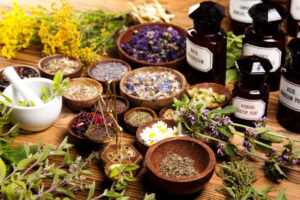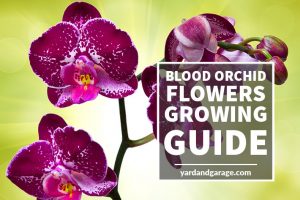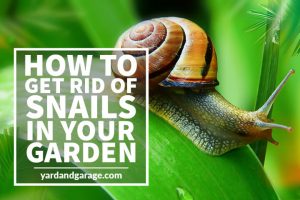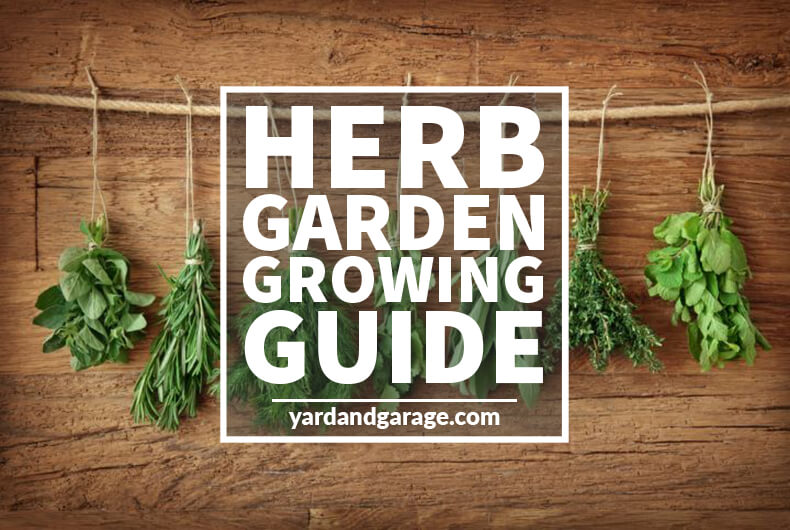 Planting an indoor or outdoor herb garden is an easy and affordable way to bring fresh flavor to any type of prepared dish. In addition to offering a burst of flavor, herbs are low-calorie foods packed with vitamins, minerals and nutrients that encourage good health.
Planting an indoor or outdoor herb garden is an easy and affordable way to bring fresh flavor to any type of prepared dish. In addition to offering a burst of flavor, herbs are low-calorie foods packed with vitamins, minerals and nutrients that encourage good health.
Did you know that you don’t need a huge garden to grow some of the most used herbs at home? What you do need is soil, fertilizer, pots, seeds, and a fair amount of space―and, of course, enough gardening smarts, passion and patience to see your project through, from sowing to harvesting.
This article offers an overview of our favorite herbs, some of which can thrive in shady areas.
Setting Up Your Herb Garden
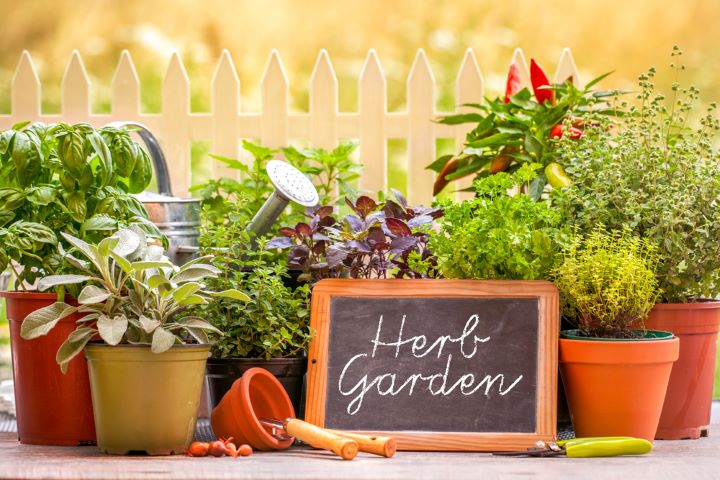
Identify Your Growing Space
One of the primary factors in your herb garden’s success is based on access to sunlight. You’ll need to find a space that gets around 4-6 hours of direct sunlight each day.
Ideally, this sunny space will be close to an area where you spend a lot of time – such as your kitchen. You’ll be able to keep an eye on your fledgling garden as well as snip some basil or oregano when preparing your family’s meals.
Choose Your Plants
Determine which plants you want to grow. If you’re undecided about which herbs to include, we’ve included a list of the more popular options below.
Once you’ve identified the herbs you’ll need to select the appropriate containers. Some herbs will require larger vessels while some may need simple shallow containers.
The one universal requirement for a great herb garden is excellent drainage.
Nurture Your Garden
Once you’ve planted your herbs watch for the seeds to germinate and sprouts to appear. You’ll need to maintain the proper moisture level for each of your plants and perhaps give them a little fertilizer burst every few weeks.
If necessary, transplant some of the plants into additional containers to avoid overcrowding. Be sure to harvest on a regular basis so that your herb garden can continue to flourish for years!
Which Plants to Grow
The following plants are some of our favorite herbs we love to grow. Regardless of the types of herbs you choose to grow, it’s important to do some gardening research to ensure your plants can thrive.
We’ve included information regarding sun exposure, watering schedule, type of soil, and appropriate types of nourishment.
Basil
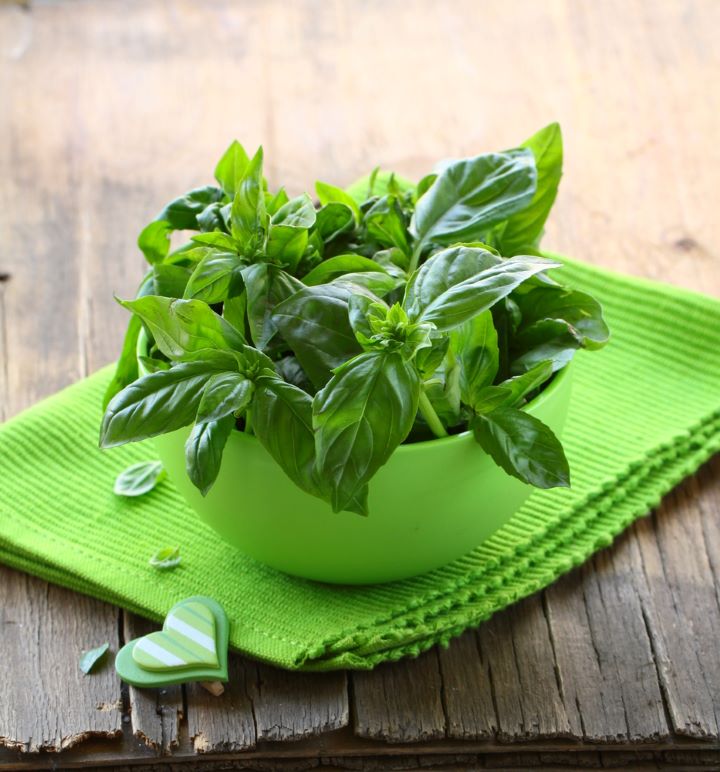
Genovese Basil
Sun: Full Sun
Spacing: 15 – 18 inches between plants.
Grows well in: Containers and flower beds.
Use: Seasoning in Italian dishes.
In Italy, basil is known as the herb of love. According to legend, if a man presents a woman with a sprig of basil she will fall madly in love and never leave him. In ancient Greece, basil was highly regarded as a sacred herb reserved for royalty. In America, people love basil for its sweet, spicy, and lemony flavor.
Several types of basil exist. The most common include Genovese, Lemon, and Thai. Genovese basil has bright green round leaves and presents a sweet flavor. It is often used in Italian cooking and is the primary ingredient in pesto.
Lemon basil has smooth oblong leaves and dark purple flower shoots. It is usually served raw to preserve the lemon flavor. Lemon basil is great with salads, salad dressings, and flavored oils.
How to Grow Basil
- The best time to grow basil is in the late-spring months.
- Sow the seeds about an inch deep in well-drained, compost-enriched soil and put the pot in a place where the plant will receive at least six hours of direct sunlight each day.
- To grow basil from a cutting, place it in a tumbler of water and transplant the plant into a pot only after it has developed a healthy root system.
- To harvest basil leaves, snip off at a point right above where two large leaves meet, but never remove more than two-thirds of the plant.
Thai basil has light green narrow leaves that smell and taste like licorice. This herb is great with all types of Thai and spicy Asian dishes. Thai basil accentuates the flavor of beef, pork, chicken and seafood.
Cilantro
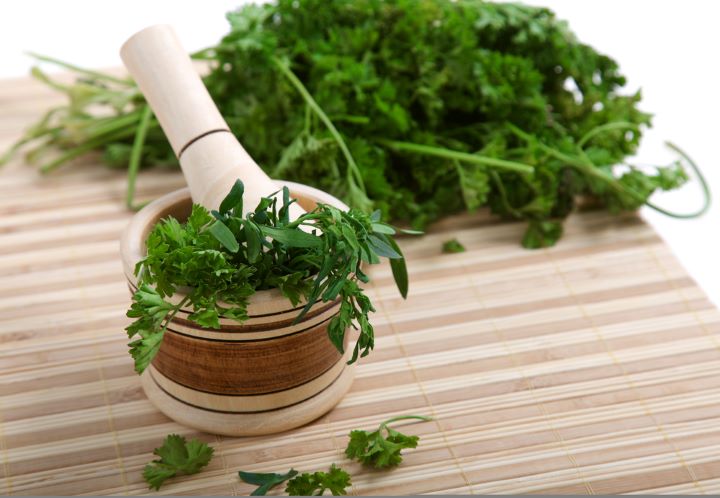
Cilantro
Sun: Full to Partial Sun
Spacing: 12 – 18 inches between plants.
Grows well in: Containers and flower beds.
Use: Seasoning in Mexican, Asian, and Caribbean recipes.
Most people are familiar with cilantro through Mexican fare. Most salsas, tortilla soups, and fajita recipes use cilantro. However, cilantro is a popular herb choice with Asian, European and Mediterranean cooking. It’s perfect with stir-fry, makes a flavorful pesto, and adds a hint of spiciness to soups, salads, and marinades.
One unique feature of cilantro is the entire plant is edible. As it matures, the plant produces flowers and seeds which can be incorporated into casseroles, stews or meat rubs. Cilantro seeds are known as coriander and present with a woodsy, cinnamon flavor.
How to Grow Cilantro
- Start with a handful of seeds and a deep pot with a wide mouth.
- Soak the dry seeds in water for a day, then sprinkle them over the soil and cover them lightly with more soil, about an inch deep.
- Keep the pot in the shade and put it out in the sun only after the shoots have achieved a height of three inches.
Cilantro plants perform better if placed in an area that receives early morning sun and prefers moist, well-drained soil.
Dill Weed
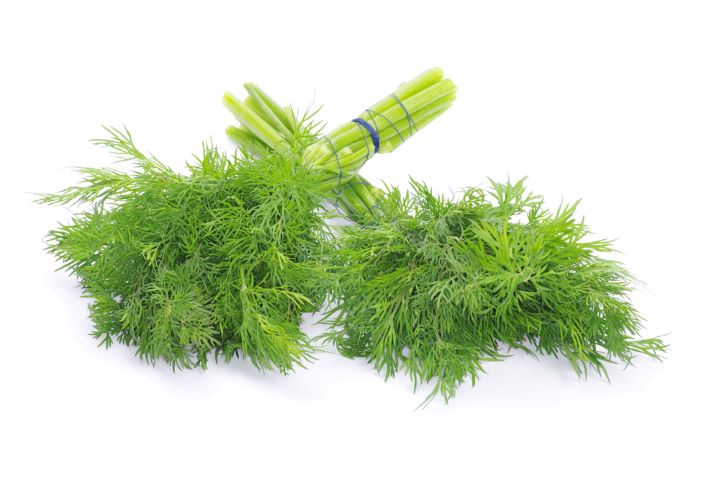
Dill
Sun: Full to Partial Sun
Spacing: 12 – 15 inches between plants.
Grows well in: Flower and herb gardens.
Use: Flavor in many types of dishes.
Dill is a mild-flavored herb that can be used in nearly any type of cooking, including baked goods and dessert. Dill leaves are used to garnish fish or season yogurt-based sauces. It is an excellent spice with potato dishes and omelets and enhances the flavor of cucumber relishes and salads.
Upon maturity, dill plants produce edible seeds which are often used to make dill pickles, salad dressings, and potato salads. Dill is a delicate herb that should be added to dishes as the final step in order to retain its flavor.
How to Grow Dill Weed
- Dill grows very well from seed planted in about a quarter-inch of rich soil.
- Containers will need to be deeper than 12 inches in order to accommodate the roots.
- Place pots on a windowsill or other location that will receive 6-8 hours of direct sunlight.
- Use a mister often to keep the soil moist.
- Thin plants out once they are 1-2 inches high.
Dill is a pretty herb plant that has soft, wispy, dark green leaves. Although fragile-looking, dill is actually quite hardy and performs well under most conditions. Dill prefers full sunlight and moist, well-drained soil.
Mint
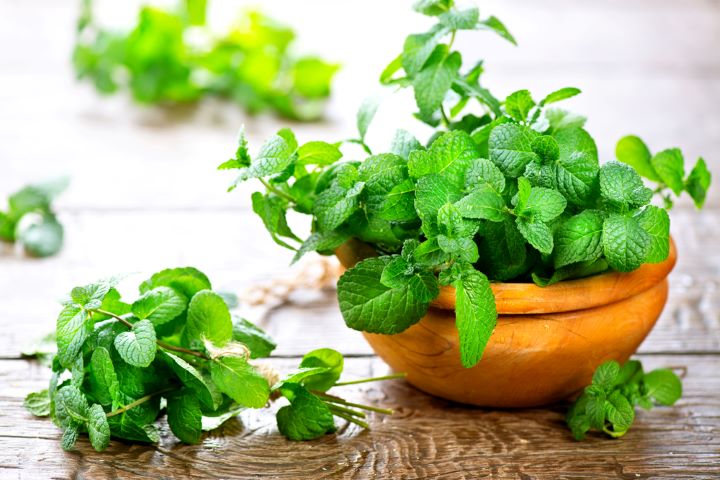
Chocolate Mint
Sun: Full to Partial Sun
Spacing: 18 – 24 inches between plants.
Grows well in: Herb and container gardens.
Use: Flavoring desserts or beverages.
Mint is a hardy herb that presents with a refreshing, spicy flavor. Several mint varietals exist including peppermint, spearmint, orange mint, pineapple mint, and apple mint. The leaves can be used whole for garnishing, chopped, crushed or dried.
Mint is very popular in Mediterranean fare and Greek cuisine. It complements the flavor of lamb and red meats and is often used to season rice dishes, curries, couscous, bean casseroles, and yogurt dressings. Whole mint leaves are the perfect garnish for iced tea and mint juleps.
How to Grow Mint
- To grow mint in a pot from seeds, plant the seeds a quarter-inch deep in moist soil.
- Keep the pot in a shady area and the soil moist till seedlings emerge.
- Then place the pot on a window sill to give the seedlings at least eight hours of sunlight per day.
- To grow mint from cuttings, place the cuttings in a tumbler of water with some mud mixed in.
- Keep the tumbler away from direct sunlight and wait till roots form.
- Then plant in a pot, ensuring that the root system is fully covered with soil.
Mint plants tend to quickly grow and spread. It is best to plant mint in a separate container or redirect growing pattern with a small trellis. Mint will grow in full sun or shady areas and prefers rich soil, which is slightly acidic.
Oregano
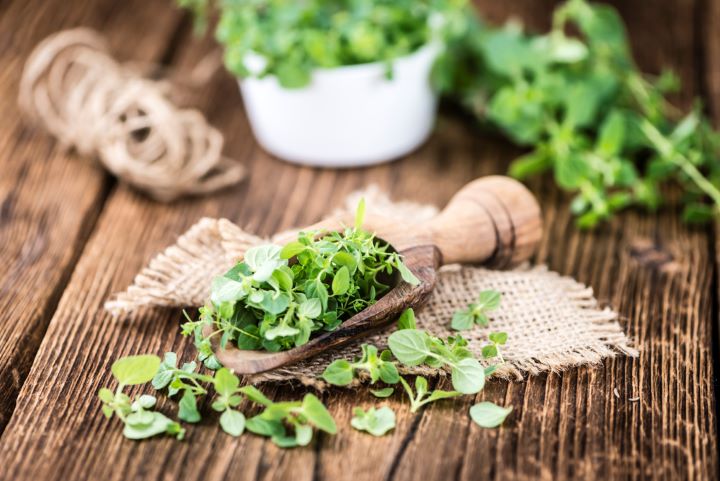
Italian Oregano
Sun: Full to Partial Sun
Spacing: 12 – 18 inches between plants.
Grows well in: Herb and container gardens.
Use: Mainstay of Italian dishes.
Oregano is a mild-flavored herb that is often used in Italian and Mediterranean cuisine. One of the most popular uses for oregano is to season pizza and pasta sauces. Several types of oregano exist, but the most common include Greek and Common. Greek oregano has a robust flavor, while Common oregano is less pungent and sweeter.
Oregano can be infused into oils, butter or salad dressings. It enhances the flavor of omelets, frittatas, and egg casseroles. Dried oregano pairs well with chili spices making it an excellent choice for homemade chili, spicy soups, stews, and Mexican cuisine. When cooking with oregano, add the herb at the end of preparation to preserve the flavor.
How to Grow Oregano
- Plant oregano seeds under a fine layer of soil in the container.
- Place pots or trays in an area that gets a lot of direct sunlight.
- Don’t overwater – oregano prefers a dryer environment.
- As plants grow you will need to thin them out or transplant into additional pots.
- Oregano can be picked and used fresh or stored dry or frozen.
Oregano plants prefer full sun and well-drained sandy soil. Plants grow quickly and need to be pruned on a regular basis. Otherwise, they will become spindly and produce fewer leaves.
Parsley
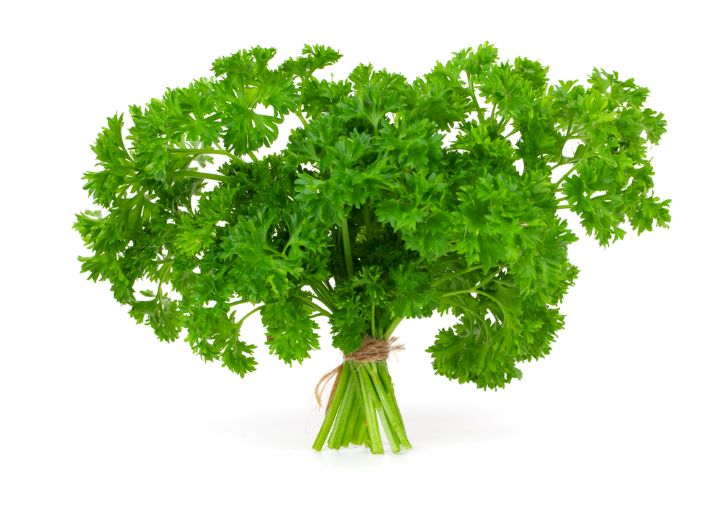
Curled Parsley
Sun: Full to Partial Sun
Spacing: 12 – 18 inches between plants.
Grows well in: Herb and container gardens, Flower beds.
Use: Garnishes and palate cleanser.
Most people think of parsley as the garnish restaurants place on the side of the plate. However, because of its mild flavor parsley is one of the most popular herbs. Parsley pairs well with meat dishes, seafood, soups, salads, and salad dressings.
Freshly chopped oregano is excellent with steamed clams and mussels. It is an inviting addition to pasta dishes and pasta sauces. Oregano is a preferred herb for making infused oils and flavored butter and can be made into a delightful pesto. It can be added to rice dishes, casseroles, and mashed potatoes or as a simple garnish to brighten any meal.
How to Grow Parsley
- Parsley is best grown from seeds planted about a quarter-inch deep in the soil, preferably in a deep pot.
- Keep the soil moist with regular spraying, and after seedlings appear in about three weeks, place the pot in a spot where the plant will get at least eight hours of direct sunlight each day.
- Keep the soil moist and well-drained, and enrich it every two weeks with a mild liquid fertilizer.
Two types of parsley are popular in the US and include flat-leaf Italian and curly parsley. Both varietals prefer full sun and moist, rich soil. Parsley should be planted in a deep pot to accommodate its long taproot.
Rosemary
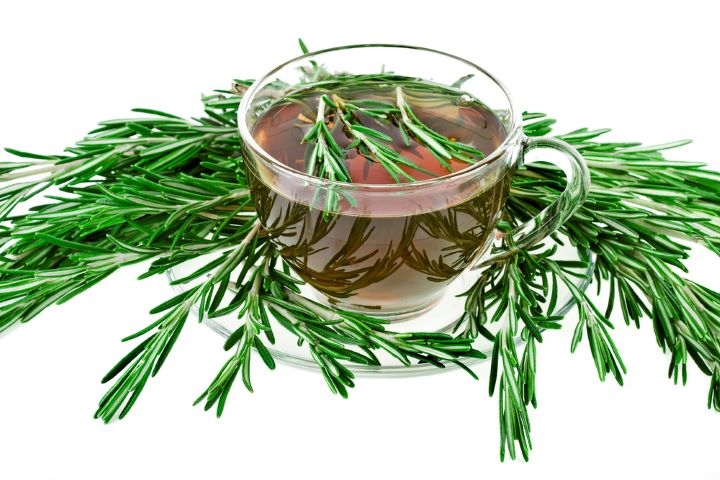
Rosemary
Sun: Full Sun
Spacing: 24 – 36 inches between plants.
Grows well in: Herb and container gardens, Flower beds, hedges.
Use: Mediterranean and Italian recipes.
Rosemary is a pungent herb often used to flavor meats and stews. Rosemary plant leaves resemble pine trees and needles should be removed prior to cooking. Some people use the entire stalk to season lamb and poultry; however, the stem should be discarded after cooking.
Rosemary should be used sparingly to avoid overpowering foods. One large sprig can season a three to four-pound roast. Rosemary pairs well with egg casseroles, frittatas, and omelets. It is an excellent choice for homemade bread, particularly focaccia. Rosemary can be added to melted butter and drizzled over vegetables or boiled, baked, or roasted potatoes. It also makes delightful dipping oil served with hot bread or crackers.
How to Grow Rosemary
- Rosemary may be grown from seeds or cuttings.
- Sow a couple of weeks before the last fall, and ensure that the plant has enough space to grow.
- Rosemary enjoys the sun, so if you live in a cold place, ensure that your potted plant receives at least six hours of direct sunlight each day.
- If you’re growing rosemary in a warm climate, keep the pot in the shade, ideally in a breezy area, with limited direct sunlight.
- Keep the soil moist and enrich it occasionally with a mild fertilizer.
- For harvesting, prune the plant evenly all around, cutting only the tender stems for the most potent leaves.
Rosemary prefers full sun and alkaline soil. Plants can grow to heights of six feet and will need to be pruned to control growth in container gardens.
Thyme
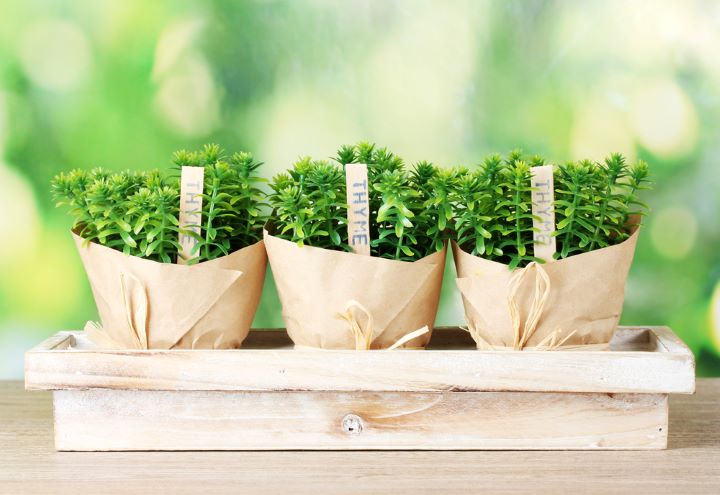
Lemon Thyme
Sun: Full to Partial Sun
Spacing: 18 – 24 inches between plants.
Grows well in: Herb and container gardens, Flower beds, ground covers.
Use: Lemon flavoring.
Thyme is a highly fragrant, slow-growing herb that presents with a strong earthy flavor. It grows low to the ground and is often used as a ground cover. When growing thyme as a culinary herb, it is best to plant in a separate container as it can quickly take over an outdoor garden or planter box.
Thyme is an excellent choice for stuffing, gravies, soups, stocks, and marinades. It can be added to bread or biscuit dough and is often used in combination with rosemary. Thyme is a great accompaniment to beans and bean casseroles. It pairs well with kidney, pinto, black, lima, navy and garbanzo beans and adds a rich, earthy flavor to baked beans.
How to Grow Thyme
- Thyme is grown from seeds or from divisions made from mature plants.
- As thyme seeds take a long time to germinate, most people prefer the latter approach.
- It involves gently uprooting a grown plant and separating a smaller clump from it―together with its root bulb―for planting elsewhere.
- Thyme grows in fairly dry soil, so make sure that the soil in your pot has a fair amount of sand to permit drainage during watering.
- To harvest thyme, snip off the tops but don’t cut more than one-third from a young plant.
Thyme is a perennial that will return for three to four years. It prefers full sun and well-drained soil. Once planted, thyme requires three to four months before leaves are ready for consumption. Harvest time generally begins mid-June through mid-July.
Potting and Soil Tips
Before using your pots, make sure there are a couple of holes at the bottom to permit proper drainage of water, but keep these holes covered with stones or pieces of tiles to prevent soil from escaping.
Avoid using garden soil, as it might include weed seeds, fungus, and insects, which could adversely affect your plants. Instead, buy potting soil with a balanced mix of moss, vermiculite, peat and organic matter. Some potting mixes contain time-release fertilizers and polymer crystals for retaining moisture, which help cut down on maintenance.
When filling soil into a pot, do it gradually, moistening and mixing it as you proceed. If there’s a large pot to be filled, first place it where you want it to be to avoid hauling a full pot around later.
Finally, before you pick a plant to grow, acquaint yourself with its needs related to soil type, sunlight, temperature, and so on. If you’re new to growing an herb garden and pot-based cultivation, stick to one plant per pot until you’ve understood the requirements of different plants and learn which can be planted together.
—
Now that you know how to grow an herb garden with pots, go ahead and start cultivating. You will have on-the-spot access to fresh ingredients and the freedom to use only what you need, which is not always possible when purchasing from a supermarket.
